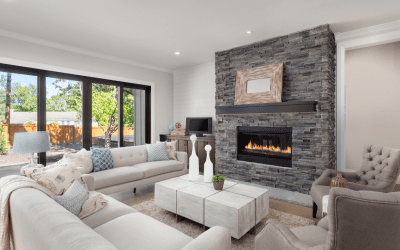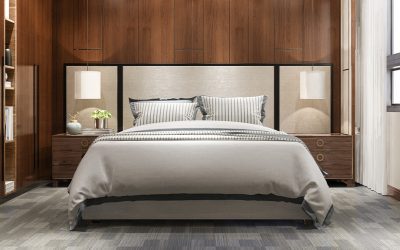In today’s fast-paced business environment, productivity is a key factor in achieving success. Many organizations are recognizing the impact of office design on employee performance and are rethinking their workspace to enhance productivity.
This article will explore the link between office design and productivity, the key elements of a productive office, innovative design ideas, and solutions to common design challenges.
Additionally, we will delve into various interior design ideas for office spaces, focusing on creating environments that foster focus, creativity, and well-being.
Understanding the Link Between Office Design and Productivity

Studies have shown that office design significantly affects employee productivity. The layout, lighting, color scheme, and furniture choices all play a role in creating a conducive work environment.
By understanding the psychology behind office design, companies can make informed decisions that positively impact employee efficiency.
When it comes to office design, it’s not just about aesthetics. The psychology of office design delves into the deeper aspects of how the physical environment can influence employee well-being and job satisfaction.
A well-designed office should foster a sense of belonging, promote collaboration, and provide a comfortable and pleasant work environment. It should also support the different work styles and preferences of employees.
Imagine walking into an office that is thoughtfully designed with the employees’ needs in mind. The colors are carefully chosen to create a calming and energizing atmosphere. Natural light floods the space, boosting mood and productivity.
The furniture is ergonomic, ensuring that employees can work comfortably for long periods without experiencing physical discomfort. All these elements contribute to a positive work environment that enhances employee efficiency.
The advantage of modular office furniture in such environments is its flexibility and adaptability, allowing for easy reconfiguration to suit evolving work needs and collaborative dynamics.
The Psychology of Office Design
Office design goes beyond mere aesthetics. It taps into the psychology of individuals and how they respond to their surroundings.
Different elements of office design can have a profound effect on employee well-being and job satisfaction.
One important aspect of office design is creating a sense of belonging. When employees feel like they are part of a community, they are more likely to be engaged and motivated.
This can be achieved through the use of shared spaces, such as communal areas or breakout rooms, where employees can interact and collaborate.
Collaboration is another key factor in office design psychology. The layout of an office can influence how employees interact and work together. Open plan layouts, for example, encourage communication and teamwork.
They create a sense of accessibility and promote the exchange of ideas. On the other hand, private offices provide privacy and focus, allowing employees to concentrate on individual tasks without distractions.
Finding the right balance between collaboration and privacy is crucial to maintaining high levels of productivity.
Furthermore, office design can impact employee well-being by considering their different work styles and preferences. Some employees may thrive in an open and dynamic environment, while others may prefer a quieter and more secluded space.
Providing a variety of work areas, such as quiet zones or flexible workstations, allows employees to choose the environment that best suits their needs and enhances their productivity.
How Office Layout Impacts Employee Efficiency
The layout of an office plays a significant role in employee efficiency. It determines how employees navigate the workspace, interact with their colleagues, and access the resources they need to perform their tasks effectively.
Well-designed office layouts take into account the flow of work and the different departments or teams within the organization. For example, placing departments that frequently collaborate in close proximity can facilitate communication and streamline processes. This reduces the time and effort required to complete tasks, resulting in increased productivity.
In addition, the layout should consider the need for both focused individual work and collaborative group work. Providing designated areas for each type of work allows employees to easily transition between tasks and work modes.
This flexibility promotes efficiency and ensures that employees have the appropriate space and resources to accomplish their goals.
Furthermore, the physical layout of an office can impact employee well-being. A well-designed office should prioritize natural light and provide access to outdoor views.
Natural light has been proven to enhance mood, reduce stress, and increase productivity. Incorporating green spaces or indoor plants can also contribute to a healthier and more pleasant work environment.
In conclusion, office design is not just about aesthetics but also about understanding the psychology behind it.
By considering the impact of layout, lighting, color scheme, and furniture choices, companies can create a work environment that promotes employee productivity and well-being.
Investing in thoughtful office design is an investment in the success of both the employees and the organization as a whole.
Key Elements of a Productive Office Design

To create a productive office, certain key elements should be considered:
Importance of Natural Light
Natural light has a significant impact on employee well-being and productivity. Incorporating large windows, skylights, or glass partitions can maximize the amount of natural light in an office.
This simple design choice can improve mood, reduce eyestrain, and increase energy levels.
Research has shown that exposure to natural light can regulate the body’s circadian rhythm, leading to better sleep patterns and increased alertness during the day. By allowing ample natural light into the office space, employees are more likely to feel refreshed and focused, resulting in higher productivity levels.
Furthermore, natural light has been found to have a positive effect on mental health. Sunlight triggers the release of serotonin, a neurotransmitter that contributes to feelings of happiness and well-being.
By creating an environment that allows for natural light to flood in, employers can help improve the overall mood and morale of their workforce.
The Role of Color in Office Design
The color scheme used in an office can influence employee mood, productivity, and creativity. Cool colors like blue and green can promote a calming and focused atmosphere, while warm colors like red and orange can stimulate energy and creativity.
Using a combination of colors strategically can create the desired work environment. When choosing colors for an office space, it is important to consider the nature of the work being done.
For example, in a creative industry where innovation and out-of-the-box thinking are valued, incorporating vibrant and stimulating colors can help inspire employees and boost their creativity.
On the other hand, in a more analytical and data-driven field, a more subdued color palette may be preferred to promote concentration and logical thinking.
Additionally, the psychology of color can also play a role in how employees perceive their surroundings.
For instance, shades of blue are often associated with trust and reliability, making it an ideal choice for collaborative spaces or meeting rooms where teamwork and cooperation are essential.
Furniture Choices for Enhanced Comfort and Productivity
The furniture in an office should prioritize comfort and ergonomics. Adjustable chairs, standing desks, and supportive seating can reduce the risk of musculoskeletal disorders and promote better posture. Providing employees with comfortable furniture can enhance productivity and reduce fatigue.
Investing in ergonomic furniture not only demonstrates a commitment to employee well-being but also has tangible benefits for productivity.
When employees are comfortable and properly supported, they are less likely to experience physical discomfort or distractions, allowing them to focus more on their work tasks.
Moreover, incorporating standing desks into the office design can encourage movement and combat the negative effects of prolonged sitting.
Studies have shown that alternating between sitting and standing throughout the workday can improve blood circulation, reduce the risk of obesity and chronic diseases, and increase energy levels.
By considering the needs and preferences of employees when selecting office furniture, employers can create a workspace that promotes both physical and mental well-being, leading to a more productive and engaged workforce.
Innovative Office Design Ideas to Boost Productivity

Small office interior design ideas focus on maximizing space and functionality while creating an aesthetically pleasing and efficient environment.
Looking beyond traditional office layouts, innovative design ideas can further enhance productivity:
Open Plan vs. Private Offices
While open plan layouts encourage collaboration, some employees may thrive in private offices that offer solitude and focus. An alternative approach is to incorporate flexible spaces that can be easily adapted to accommodate different work styles and preferences.
Incorporating Green Spaces in Office Design
Green spaces, such as indoor plants or dedicated outdoor areas, can enhance employee well-being and creativity.
Studies have shown that access to nature in the workplace can reduce stress levels and increase cognitive performance. Introducing green elements into the office design can have a positive impact on productivity.
The Concept of Activity-Based Working Spaces
Activity-based working spaces allow employees to choose the environment that best suits their tasks. These spaces can include quiet areas for focused work, collaborative spaces for group projects, and social areas for breaks.
Giving employees the flexibility to work in spaces that align with their needs can increase motivation and productivity.
Overcoming Common Office Design Challenges

Designing a productive office comes with its challenges. Recognizing and addressing these challenges is crucial for creating an optimal work environment:
Balancing Collaboration and Privacy
While collaboration is essential, privacy is equally important. Finding the right balance between open and private spaces can ensure that employees have an environment that suits their needs.
Providing dedicated meeting rooms, phone booths, and privacy pods can help maintain productivity without sacrificing collaboration.
Adapting to Different Work Styles
Employees have different work preferences and styles. Some may prefer a quiet and focused environment, while others thrive in a more lively and interactive setting.
Designing a space that accommodates these varying preferences can foster a positive work culture and optimize productivity.
Managing Noise Levels in the Workplace
Noise can be a significant distraction in the workplace, affecting concentration and productivity.
Incorporating soundproofing materials, creating designated quiet areas, or providing noise-canceling headphones can mitigate the impact of noise and enable employees to focus on their tasks.
In conclusion, office design has a direct impact on employee productivity and well-being. By understanding the psychology behind office design, incorporating key elements such as natural light, color, and comfortable furniture, and embracing innovative ideas, companies can create a workspace that fosters productivity.
Overcoming common challenges such as balancing collaboration and privacy and adapting to different work styles is essential for designing a productive office.
By taking a holistic approach to office design, organizations can boost productivity and create a positive work environment for their employees.
FAQs
1. How does office design impact employee productivity?
- Office design significantly affects productivity through layout, lighting, color scheme, and furniture choices. A well-designed office promotes a sense of belonging, collaboration, and comfort, all contributing to improved efficiency and job satisfaction.
2. Can office color schemes influence productivity?
- Yes, color schemes can impact mood, creativity, and productivity. Cool colors like blue and green promote focus, while warm colors stimulate energy. The choice of colors should align with the nature of the work.
3. Why is furniture choice important in office design?
- Ergonomic and comfortable furniture is crucial as it reduces the risk of musculoskeletal disorders, enhances posture, and minimizes fatigue, leading to increased productivity.
4. What are the benefits of including green spaces in office design?
- Green spaces, such as indoor plants or outdoor areas, reduce stress and increase cognitive performance. Access to nature in the workplace enhances employee well-being and creativity.
5. How does office layout affect employee efficiency?
- The layout determines how employees navigate the workspace and interact with colleagues. A well-planned layout facilitates collaboration, maintains flow, and caters to different work styles, boosting efficiency.




0 Comments